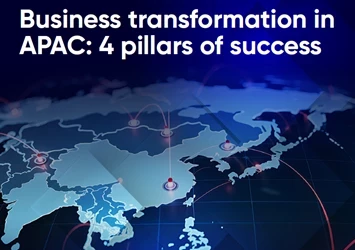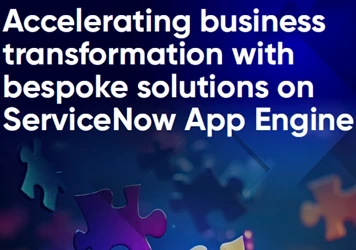Seven elements to focus on as the end of the financial year approaches (part 2)
This article outlines the first four elements companies can focus on to become more customer- or demand-sensitive while being cost-effective as a business
Add bookmark
The first part of this article series outlined the last-minute tactical solutions some function leaders often put in place as the end of the financial year (EOFY) approaches and the role of business transformation leaders in establishing an program of action to avoid chaos.
We as business transformation leaders can help companies approach the EOFY by asking questions that will foster thought leadership among our function leaders. These can help influence the transformation agenda toward a sustainable roadmap which is both customer- or demand-sensitive and cost-effective.
This article outlines the first four of the seven elements companies can focus on all year long as a program dedicated to align customer value and strategy.
The power of questioning for the purpose of understanding the reasons behind the chaos thereby finalizing strategic solutions toward EOFY is the key purpose.
Voice of Customer (VoC)
Have you observed how start-ups operate? The mind-set of their founders revolves around being flexible to market needs, sensitive to macro or micro economic factors and perceiving change as an opportunity to deliver value.
Somewhere along the journey of expanding the business, leaders tend to give precedence to efficiency over demand. In addition, they ignore the possibility of “significant change” in demand when introducing solely efficiency-influenced investments toward business transformation.
Internalizing a formal and a proactive mechanism to utilize VoC insights will offer leaders an opportunity to configure the enterprise to be customer-sensitive. The aim is to influence the need of acting on the VoC when the gaps are evident. Below are some questions business transformation leaders need to ask themselves regarding VoC as EOFY approaches:
- Is there a formal process to capture, interpret, analyze and communicate VoC to the value chain periodically?
- Are all the leaders in the value chain aware of the products or services that are offered to customers?
- How and when would the leaders know how to act on changing needs or demand?
- Do the leaders in product or service delivery collect feedback from the leaders in the value chain functions?
- How collaborative is the product or service development process?
- Does VoC influence the business transformation agenda?
Value
The reason for an organization to exist is value. The perceived and actual value offered to its customers often determines its trajectory of success.
The definition of value is not limited to the way it is communicated within an organization, it is part of its culture. Understanding value at each value chain function will mean that a leader’s perspective on cost could also be significantly influenced toward prioritizing value-based cost as opposed to cost in isolation.
Related article: Building the three pillars of corporate culture
During EOFY, leaders often focus on their own value chain function. For an enterprise to aim at reducing the cost of value chain in isolation, it must be perfectly synchronized with the aspect of cascading value originated from the customer. If not, the repercussions are the origination of organizational value islands.
Below are some questions business transformation leaders need to ask themselves regarding value as EOFY approaches:
- Are all the leaders in the value chain aware of the value their functions offer?
- Does the value have a measurement which cascades from the service or product offered to customers?
- Do leaders view cost from the perspective of value their functions add to customers from an end-to-end perspective?
- Is the business transformation portfolio governed by the overall value delivery to customers?
- Is there a measure for internal value or non-value addition? Does transformation focus on non-value addition?
- Is the cost of value chain functions measured as a function of product or services offered by the value chain?
Leadership
The strength of leadership is correlated to the strength of followship as no leader can call themselves so based only on their designation. Their role has evolved significantly and they are now demanded to wear multiple hats before making a decision.
I have observed a common pitfall that most leaders fall in to in relation to promoting the wrong people. Leaders are diverse and can be technical, visionary, people developers or political. The challenge is to have the right person to fulfil the anticipated outcome.
Common mistakes made by leaders when promoting or selecting their leaders for the task of transforming the function or business are outlined below:
- Promote or nominate candidates who are masters in following direction where the need is a person who can design and develop a strategy.
- Promoting a successful operational or technical manager for a position which demands strategic transformation and thought leadership.
- Selecting people who have no prior experience in leading or influencing other thought leaders.
- Promotions based on political influence over business transformation.
The results of the above mistakes can manifest in similar issues every year and yet leaders call that seasonality. In addition, this can demoralize knowledge workers due to lack of opportunity to implement their professional know-how.
Role of a business leader in the presence of business transformation
| Area of focus | Behaviors needed as a thought leaders |
| Organize and recognize end-to-end value chain |
|
| Develop value-based leaders |
|
| Growth mind-set over fixed mind-set |
|
| Problem-solving and delivery |
|
| Authentic leadership |
|
Below are some leading questions business transformation professionals can ask function leaders:
- Are you a cross-value chain communicator who thinks about the value chain before making a decision in your function?
- Do you think of strategic solutions rather than quick yearly fixes to business problems that keep occurring annually?
- Do you inspire your colleagues to connect the VOC, value and value chain to what you do on a day-to-day basis?
- Do you promote diverse views when making decisions? Are you open to feedback?
- Do you actively participate on transforming your function or do you follow a direction on a process which is working well?
- Have you transformed the organization materially during your tenure?
Product or service-based value chains
The conventional organizational structure which depends on marketing and selling a product/service through a central operation does not suit the organization of the future. At the rapid rate of changing demand and VoC, the concrete central facilities are getting challenged for the very basis they were introduced for, which is reduced transaction cost.
How often have you come across enterprises that embark on centralization and then a few years later decentralize?
Establishing dedicated product- or service- driven value chains will enable leaders to view the value conversion effectively. Leveraging a center of excellence should not impact the speed, quality or complexity of services offered to customers. The principle of centralization, automation or digitization is secondary and must be based on value creation.
Read PEX Network report: Leveraging intelligent automation to link strategy with process improvement
The leaner the organization, the faster it is to respond to changing demand. Even challenging market conditions are less detrimental to shareholders from a cost standpoint. The notion of dedicated product- or service- value chains being expensive are debunked especially through the evolution of technology.
Surprisingly, comparisons made based on the cost of transaction, overtime, rework, quality and transformation of a central facility versus a dedicated value chain often results in shocking results making leaders scratch their heads. The biggest drawback in the absence of processes of a central consolidated operation is its isolated culture which detaches the VoC from value and value chain.
Structure follows strategy, strategy is influenced by value and value chains deliver value. No matter how effective digitization is, if the value perceived by customers is impacted by delays, inferior quality and lacking a competitive edge, customers will move on to other options. It is vital to understand how value transforms within the organization to make decisions on business transformation.
Below are some questions business transformation professionals should ask function leaders:
- Do the customer complaints often relate to the lack of collaboration between product and the operational organization?
- Are there duplicated processes in the front and back end?
- Do you know the total cost per transaction for each product and service offering?
- How would you correlate the cost of your value chain function to the price customers pay?
- How well do you know the business transformation agenda for your product or function?
- Were you consulted in developing it?
- Are there frequent cross-functional leader discussions to assess the trajectory of the value offering?
- Does the profitability of your product or service serve the total value offering throughout the whole value chain?
- Are you proactively or reactively making decisions based on value chain insights to adjust what you add to the customer value?
Creating product- or service-based value chains does not mean the absence of centralized functions. It means they are created when there is evidence of material value from an end-to-end perspective. Customer is at the heart of the decision while profitability is a subfunction of it.
The next part of this article series will focus on operations management and continuous improvement, transformation and cost of value delivered through value chains.
Do you focus on these elements year-round? Let us know by leaving a comment below.
















